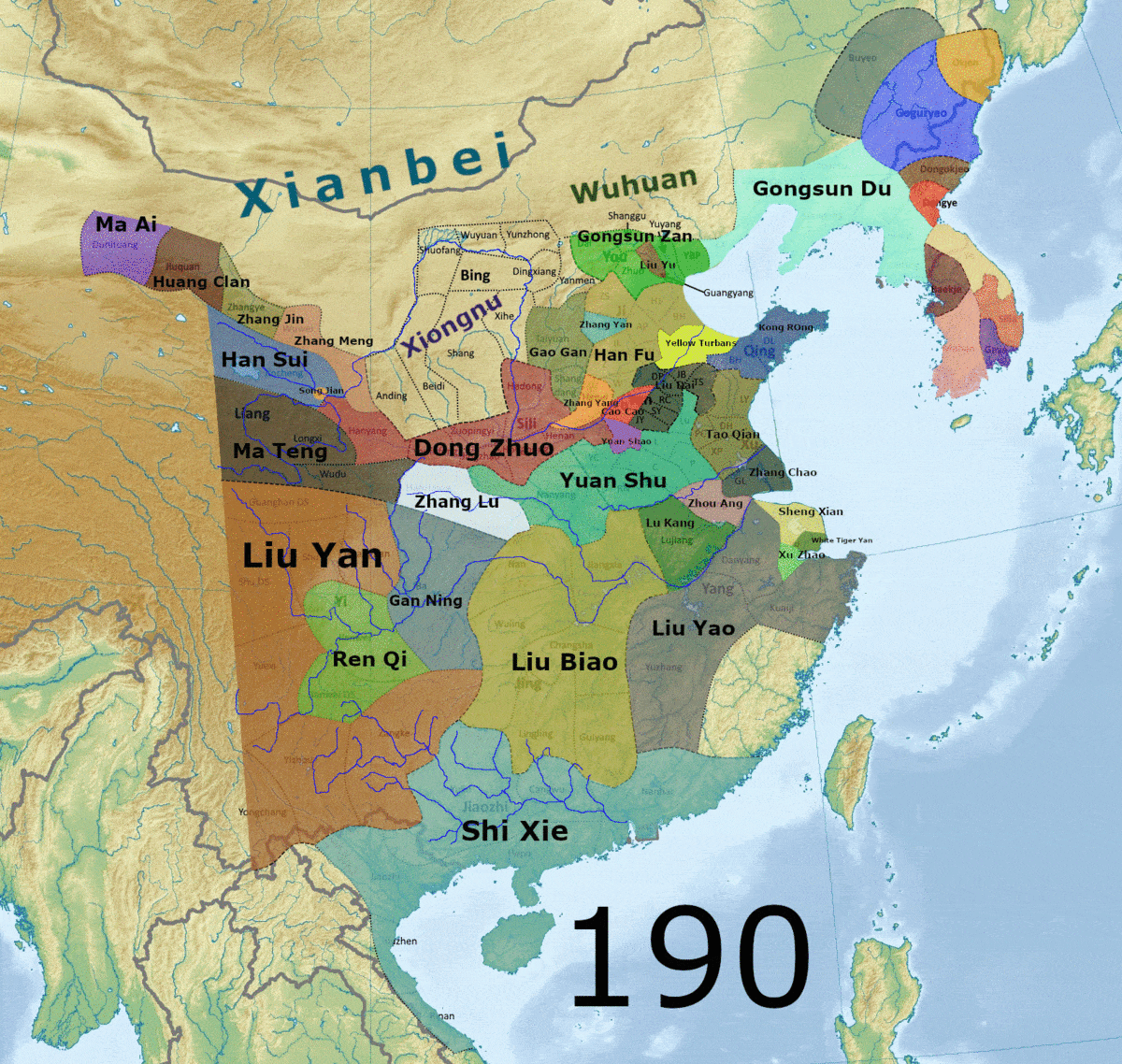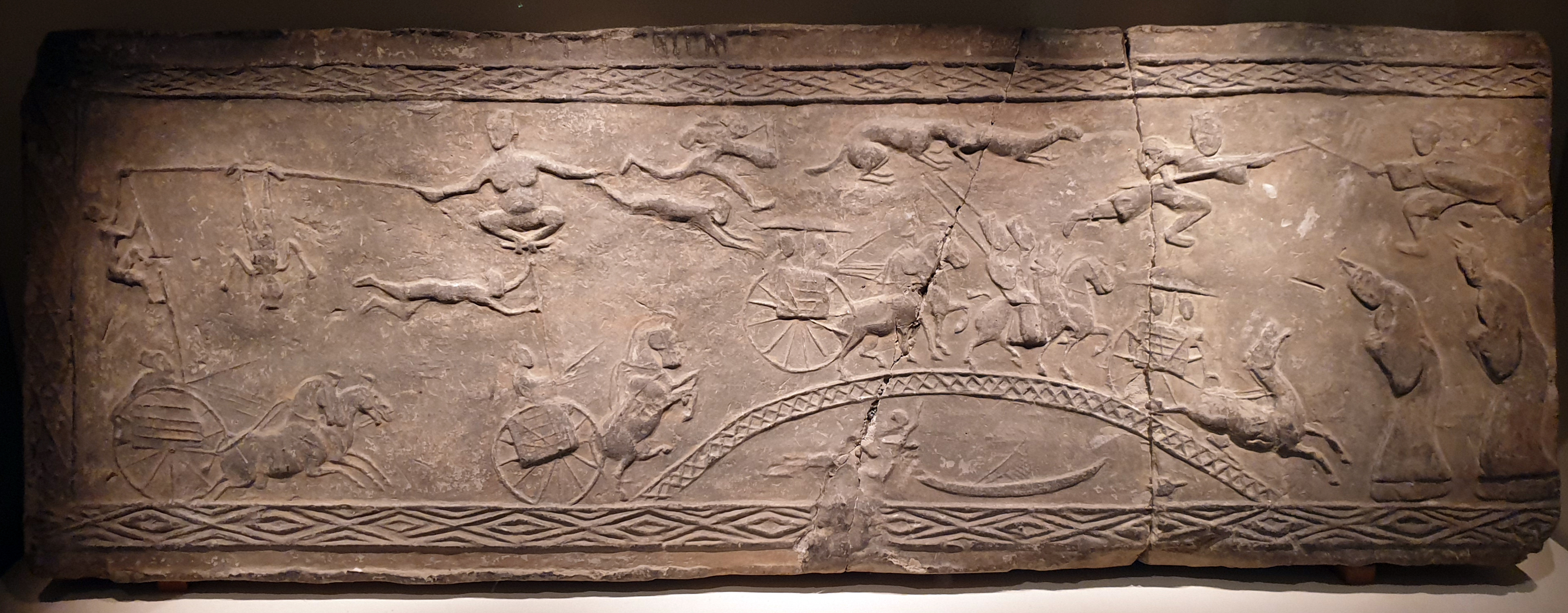|
Baxi Commandery
Baxi Commandery (巴西郡) was a commandery of imperial China located in what is now northeastern Sichuan and parts of southern Shaanxi. It was established in 111 BCE under the Western Han dynasty following the administrative division of the larger Ba Commandery. Centered on the Jialing River, Baxi played an important role in the Han administration of the southwestern frontier and remained active through the Three Kingdoms, Western Jin, and Southern dynasties until it was abolished by the Sui dynasty in 589 CE. Geography and counties According to the ''Book of Han'', Baxi governed twelve counties. A 2 CE census recorded 54,087 households and 269,613 individuals.Ban Gu. ''Book of Han'', Geography Treatise. Han dynasty Baxi was formed to solidify Han control over the upper Jialing River and the rugged Ba heartland. The commandery’s capital, Langzhong, developed into a walled garrison city and river port linking the Sichuan Basin with the northern and eastern highlands. Ha ... [...More Info...] [...Related Items...] OR: [Wikipedia] [Google] [Baidu] |
Western Han
The Han dynasty was an imperial dynasty of China (202 BC9 AD, 25–220 AD) established by Liu Bang and ruled by the House of Liu. The dynasty was preceded by the short-lived Qin dynasty (221–206 BC) and a warring interregnum known as the Chu–Han Contention (206–202 BC), and it was succeeded by the Three Kingdoms period (220–280 AD). The dynasty was briefly interrupted by the Xin dynasty (9–23 AD) established by the usurping regent Wang Mang, and is thus separated into two periods—the Western Han (202 BC9 AD) and the Eastern Han (25–220 AD). Spanning over four centuries, the Han dynasty is considered a golden age in Chinese history, and had a permanent impact on Chinese identity in later periods. The majority ethnic group of modern China refer to themselves as the " Han people" or "Han Chinese". The spoken Chinese and written Chinese are referred to respectively as the "Han language" and " Han characters". ... [...More Info...] [...Related Items...] OR: [Wikipedia] [Google] [Baidu] |
Three Kingdoms
The Three Kingdoms of Cao Wei, Shu Han, and Eastern Wu dominated China from AD 220 to 280 following the end of the Han dynasty. This period was preceded by the Eastern Han dynasty and followed by the Jin dynasty (266–420), Western Jin dynasty. Academically, the periodisation begins with the establishment of Cao Wei in 220 and ends with the conquest of Wu by Jin in 280. The period immediately preceding the Three Kingdoms, from 184 to 220, was marked by chaotic infighting among warlords across China as Han authority collapsed. The period from 220 to 263 was marked by a comparatively stable arrangement between Cao Wei, Shu Han, and Eastern Wu. This stability broke down with the conquest of Shu by Wei in 263, followed by the usurpation of Cao Wei by Jin in 266 and ultimately the conquest of Wu by Jin in 280. The Three Kingdoms period including the collapse of the Han was one of the most dangerous in Chinese history due to multiple plagues, widespread famines, and civil war. A n ... [...More Info...] [...Related Items...] OR: [Wikipedia] [Google] [Baidu] |
Guanghan Commandery
Guanghan ( zh, s=广汉, t=廣漢, p=Guǎnghàn; formerly known as Hanchow) is a county-level city under the administration of Deyang in Sichuan province, southwest China, and only from Chengdu. The predominant industries are tourism, pharmaceuticals and the supply of building material. Guanghan has an area of , a population of 626,132, with urban population of 368,933. A major part of the tourism is the nearby Sanxingdui ruins. The striking exhibits at the Sanxingdui Museum highlight archaeological finds that some archaeologists regard as even more important than the Terracotta Army. The region is steadily becoming more industrialised and that is helping with the progression of agriculture and enhances the region's development. Administrative divisions Guanghan comprises 3 subdistricts and 9 towns: ;Subdistricts: *Luocheng 雒城街道 *Hanzhou 汉州街道 *Jinyan 金雁街道 ;Towns: *Sanshui 三水镇 *Lianshan 连山镇 *Gaoping 高坪镇 *Xiangyang 向阳镇 *Xiaohan 小 ... [...More Info...] [...Related Items...] OR: [Wikipedia] [Google] [Baidu] |
Southern Dynasties
The Northern and Southern dynasties () was a period of political division in the history of China that lasted from 420 to 589, following the tumultuous era of the Sixteen Kingdoms and the Eastern Jin dynasty. It is sometimes considered as the latter part of a longer period known as the Six Dynasties (220–589). The period featured civil war and political chaos, but was also a time of flourishing arts and culture, advancement in technology, and the spread of Mahayana Buddhism and Taoism. The period saw large-scale migration of Han people to lands south of the Yangtze. The period came to an end with the unification of China proper by Emperor Wen of the Sui dynasty. During this period, the process of sinicization accelerated among the non-Han ethnicities in the north and among the indigenous peoples in the south. This process was also accompanied by the increasing popularity of Buddhism in both northern and southern China and Daoism gaining influence as well, with two es ... [...More Info...] [...Related Items...] OR: [Wikipedia] [Google] [Baidu] |
Yizhou Province
{{geodis ...
Yi Prefecture or Yizhou may refer to: * Yizhou (Southwest China) (), a historical province of China covering Southwest China * Yi Prefecture (Shandong) (), active between the 7th and 18th centuries * Yi Prefecture (Guangxi) (), active between the 7th and 13th centuries * Yi Prefecture (Hebei) * Yi Prefecture (Korea), now known as Uiju or Uiju County * Yizhou District, Hechi (), district of Hechi, Guangxi named after the historical prefecture * Yizhou District, Hami (), district of Hami, Xinjiang * Yizhou (island) (), a legendary island described in historical texts that is possibly Taiwan or the Ryukyus See also * Yi (other) Yi or YI may refer to: Philosophic principle * Yi (philosophy) (义; 義, righteousness, justice) among the Three Fundamental Bonds and Five Constant Virtues Ethnic groups * Dongyi, the Eastern Yi, or Tung-yi (Chinese: , ''Yí''), ancient peo ... [...More Info...] [...Related Items...] OR: [Wikipedia] [Google] [Baidu] |
Hanzhong
Hanzhong ( zh, s= , t= , l=middle of the Han River (Hubei), Han River; abbreviation: Han) is a prefecture-level city in Southern Shaanxi, the southwest of Shaanxi, Shaanxi province, China, bordering the provinces of Sichuan to the south and Gansu to the west. The founder of the Han dynasty, Liu Bang, was once enfeoffed as the king of the Hanzhong region after overthrowing the Qin dynasty. During the Chu-Han contention, Liu Bang shortened his title to the King of Han (), and later used it as the name of his imperial dynasty. In this way, Hanzhong was responsible for the naming of the Han dynasty, which was later hailed as the first golden age in imperial Chinese history and lends its name to Han Chinese, the principal ethnic group in China. Hanzhong is located at the modern headwater of the Han River, the largest tributary of the Yangtze River. Hanzhong city covers and is centered around the Hantai District. The prefecture-level city consists of two urban district and nine rura ... [...More Info...] [...Related Items...] OR: [Wikipedia] [Google] [Baidu] |
Zhuge Liang
Zhuge Liang () (181September or October 234), also commonly known by his courtesy name Kongming, was a Chinese statesman, strategist, and inventor who lived through the End of the Han dynasty, end of the Eastern Han dynasty ( 184–220) and the early Three Kingdoms period (220–280) of China. During the Three Kingdoms period, he served as the Chancellor (China), Imperial Chancellor (or Prime Minister) of the state of Shu Han (221–263) from its founding in 221 and later as regent from 223 until his death in September or October 234. He is recognised as the most accomplished strategist of his era. His reputation as an intelligent and cultured scholar grew even while he was living in relative seclusion, earning him the nickname "Wolong" or "Fulong" (both meaning "Sleeping Dragon"). Zhuge Liang's methods of administration drew both from Legalism (Chinese philosophy), Legalism as well as Confucianism. He was critical of the Legalist thought of Shang Yang, and advocated benevole ... [...More Info...] [...Related Items...] OR: [Wikipedia] [Google] [Baidu] |
Liu Bei
Liu Bei (, ; ; 161 – 10 June 223), courtesy name Xuande (), was a China, Chinese warlord in the late Han dynasty#Eastern Han, Eastern Han dynasty who later became the founding Emperor of China, emperor of Shu Han, one of the Three Kingdoms of China. Despite early failings and lacking both the material resources and social status other warlords of his time commanded, he gathered support among Han loyalists who opposed Cao Cao, the warlord who controlled the Han central government and the figurehead Emperor Xian of Han, Emperor Xian, and led a popular movement to restore the Han dynasty. Liu Bei overcame a number of setbacks to carve out his own realm, which at its peak spanned present-day Sichuan, Chongqing, Guizhou, Hunan, and parts of Hubei, Yunnan, and Gansu. Bolstered by the cultural influence of the 14th-century historical novel ''Romance of the Three Kingdoms'' and its portrayal of Liu Bei as an exemplar of virtuous Confucianism, Confucian rule, Liu Bei is widely revered ... [...More Info...] [...Related Items...] OR: [Wikipedia] [Google] [Baidu] |
Jialing River
The Jialing River, formerly known by numerous other names, is a major tributary of the Yangtze River in the Sichuan Basin. It is named after the Jialing Valley in Feng County, Shaanxi through which it flows. The Jialing River's most notable characteristic was formerly its pellucid green waters. It is also notable for its sinuous course in its lower reaches. From Zhangwang Miao (Temple of Zhangfei) in Langzhong to the mouth, the distance as the crow flies is . However the river itself travels . The most tortuous part of its course is between Nanchong and Wusheng County. Names The name Jialing did not come into general use until the Tang Dynasty.. Before that, it was generally known as the Ba, although it also appears as the Lang and Yu as well. In the 19th century, it was known by the Sichuanese as the Small or Little River, by comparison with the Jinsha and Yangtze. Geography The source of the Jialing, in name, is in the Jialin, which means "the tomb of Jia (嘉陵 ... [...More Info...] [...Related Items...] OR: [Wikipedia] [Google] [Baidu] |
Western Han Dynasty
The Han dynasty was an imperial dynasty of China (202 BC9 AD, 25–220 AD) established by Liu Bang and ruled by the House of Liu. The dynasty was preceded by the short-lived Qin dynasty (221–206 BC) and a warring interregnum known as the Chu–Han Contention (206–202 BC), and it was succeeded by the Three Kingdoms period (220–280 AD). The dynasty was briefly interrupted by the Xin dynasty (9–23 AD) established by the usurping regent Wang Mang, and is thus separated into two periods—the Western Han (202 BC9 AD) and the Eastern Han (25–220 AD). Spanning over four centuries, the Han dynasty is considered a golden age in Chinese history, and had a permanent impact on Chinese identity in later periods. The majority ethnic group of modern China refer to themselves as the " Han people" or "Han Chinese". The spoken Chinese and written Chinese are referred to respectively as the "Han language" and " Han characters ... [...More Info...] [...Related Items...] OR: [Wikipedia] [Google] [Baidu] |
Eastern Han
The Han dynasty was an Dynasties of China, imperial dynasty of China (202 BC9 AD, 25–220 AD) established by Liu Bang and ruled by the House of Liu. The dynasty was preceded by the short-lived Qin dynasty (221–206 BC) and a warring interregnum known as the Chu–Han Contention (206–202 BC), and it was succeeded by the Three Kingdoms period (220–280 AD). The dynasty was briefly interrupted by the Xin dynasty (9–23 AD) established by the usurping regent Wang Mang, and is thus separated into two periods—the #Western Han (202 BC – 9 AD), Western Han (202 BC9 AD) and the #Eastern Han (25–220 AD), Eastern Han (25–220 AD). Spanning over four centuries, the Han dynasty is considered a Golden ages of China, golden age in Chinese history, and had a permanent impact on Chinese identity in later periods. The majority ethnic group of modern China refer to themselves as the "Han people" or "Han Chinese". The spoken Chinese ... [...More Info...] [...Related Items...] OR: [Wikipedia] [Google] [Baidu] |
Langzhong
Langzhong (formerly known as Paoning) is a county-level city in northeastern Sichuan province, China, located on the middle reaches of the Jialing River. It is administered as part of the prefecture-level city of Nanchong. Langzhong has a total population of 622,667, with 303,044 residing in the urban area in 2020. Langzhong is famous for its historic centre, home to 30,000 of its residents. It is one of the best preserved historic towns of China, dating back to the Tang dynasty. The city was also the seat of the former Anglican Diocese of Szechwan. History The site of present-day Langzhong served for a time as the capital of Ba, a native but sinicized Sichuan state during China's Warring States period. It takes its present name from its role as the seat of Langzhong County, established by Qin two years after its 316 BC conquest of Shu and Ba. Under the Han and Tang, it was an important center for astronomical research. Under the Yuan, Ming, and Qing, it was ... [...More Info...] [...Related Items...] OR: [Wikipedia] [Google] [Baidu] |









